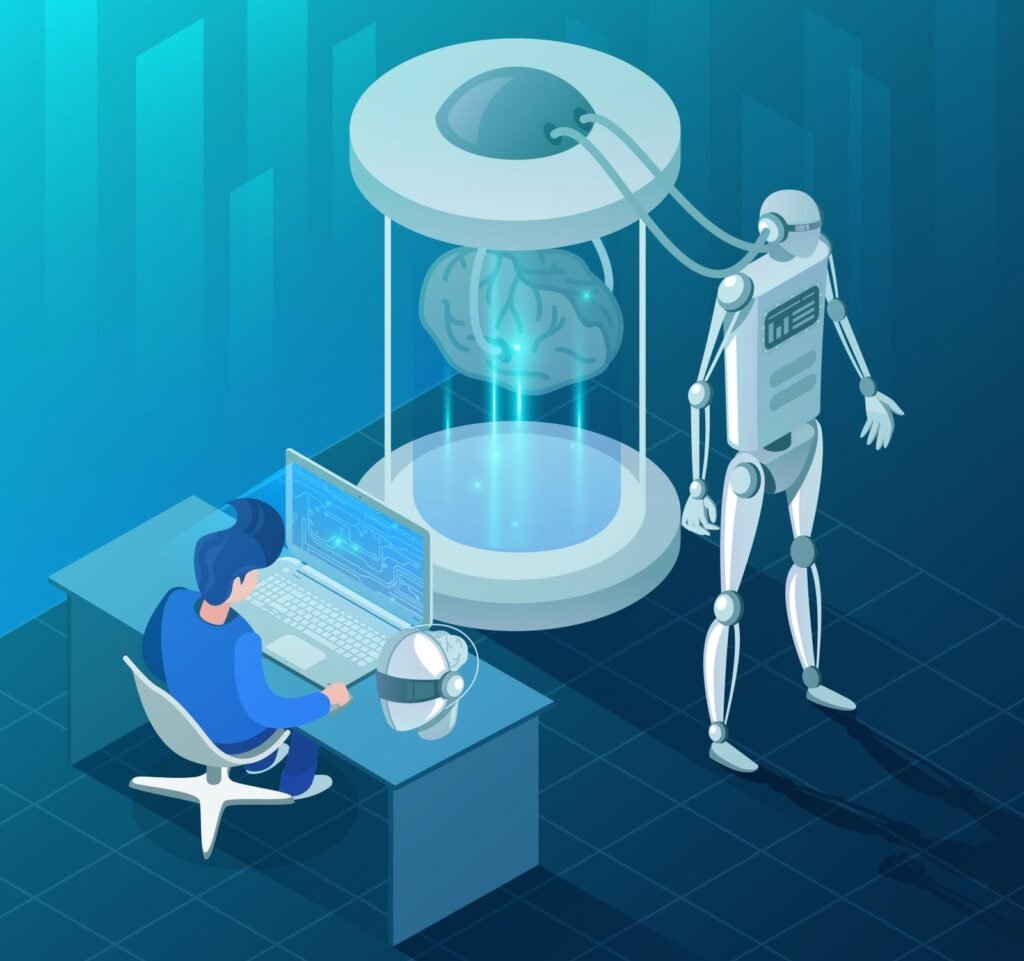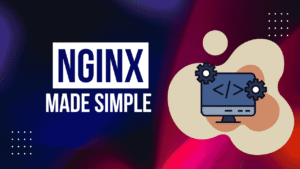Artificial Intelligence or AI agents are reshaping industries, automating tasks, and making complex decision-making more efficient. These intelligent systems rely on intricate technical architectures to function effectively. At their core, AI agents combine machine learning models, data pipelines, and specialized algorithms to analyze information, learn from it, and perform actions. Lets delve into the anatomy of an AI agent, breaking down its essential components, including natural language processing (NLP) models, data pipelines, and reinforcement learning frameworks, to provide a comprehensive understanding of their technical backbone.
On This Page
Table of Contents
What is an AI Agent?
An AI agent is a program or system that utilizes artificial intelligence to perform tasks autonomously. They can perceive their environment, think critically, and take actions to achieve specific goals.
Key Characteristics of AI Agents
- Autonomy: AI agents operate independently without human intervention.
- Adaptability: They can learn from experiences and adjust to new situations.
- Decision-making: AI agents analyze data to make informed choices.
Real-World Applications of AI Agents
AI agents are revolutionizing multiple industries. Here are some examples:
| Industry | Application |
|---|---|
| Healthcare | AI agents assist in diagnosing diseases by analyzing medical images. |
| Finance | They offer robo-advisory services for personalized investment decisions. |
| Robotics | AI agents power autonomous robots that can perform complex tasks. |
AI agents are integral to the advancement of technology across various sectors. Their ability to learn and adapt makes them invaluable for enhancing efficiency and accuracy in numerous applications.
Core Components of an AI Agent
AI agents are fundamentally designed systems that can perceive their environment, reason, and take action towards certain goals. These agents operate based on several core components which collectively enable them to function effectively.
The essential components of an AI agent can be categorized as follows:
- Perception: This involves the ability of the agent to sense and interpret inputs from the environment.
- Reasoning: Agents utilize logical reasoning to analyze data received from their perception.
- Learning: A key attribute that allows agents to improve their performance over time through experience.
- Decision Making: Based on the reasoning and learned information, agents determine the best course of action.
- Action: Finally, the agent executes the selected action to achieve a goal.
How Components Work Together
The interplay among these components is critical for the agent’s efficiency. For instance, a self-driving car (an AI agent) perceives its surroundings using sensors (Perception), processes this data to understand obstacles (Reasoning), adapts to changing road conditions (Learning), decides the best route (Decision Making), and navigates appropriately (Action).
The cohesive functioning of perception, reasoning, learning, decision making, and action allows AI agents to perform complex tasks reliably.
Natural Language Processing (NLP) Models
Natural Language Processing (NLP) refers to a branch of artificial intelligence that focuses on the interaction between computers and humans through natural language. The goal of NLP is to enable machines to understand, interpret, and respond to human language in a valuable way. With the rise of AI agents, NLP is playing a pivotal role in advancing communication between humans and machines.
Key Techniques in NLP
There are several essential techniques utilized in NLP that significantly enhance the performance of AI agents:
- Tokenization: This process breaks text into individual words or phrases, making it easier for AI to analyze and understand the structure of sentences.
- Sentiment Analysis: This technique evaluates the sentiment behind a string of text, helping AI agents understand emotions, opinions, and attitudes expressed in natural language.
- Language Generation: AI agents can generate human-like text, responding coherently and contextually based on the input they receive.

Popular NLP Models
Several outstanding models are making strides in the field of NLP:
| Model | Description |
|---|---|
| GPT | Generative Pre-trained Transformer (GPT) excels in language generation tasks, producing coherent and contextually relevant text. |
| BERT | Bidirectional Encoder Representations from Transformers (BERT) focuses on understanding the context of words in search queries, making it invaluable for comprehension tasks. |
The interplay between NLP techniques and AI agents is transforming how we interact with technology, making it increasingly intuitive and efficient.
Data Pipelines: The Lifeblood of AI Agents
In the rapidly evolving field of artificial intelligence, data pipelines serve as the foundation upon which AI agents build their capabilities. These pipelines ensure the systematic collection, preprocessing, and management of data, which are crucial for training AI models effectively.
Key Components of Data Pipelines
A well-structured data pipeline includes several components:
- Data Collection: Gathering data from various sources.
- Data Preprocessing: Cleaning and transforming data into a usable format.
- Data Management: Storing and accessing data efficiently.
Tools and frameworks such as Apache Kafka and Airflow play a pivotal role in these processes. For example, Apache Kafka facilitates the handling of real-time data streams, while Apache Airflow schedules and manages workflows for batch data processing.
Importance of real-time vs. batch data processing.
Let’s briefly explore both:
| Data Processing Type | Description | Use Case |
|---|---|---|
| Real-time Processing | Data is processed immediately as it arrives. | Real-time analytics for decision-making. |
| Batch Processing | Data is collected and processed in groups at scheduled times. | Monthly reports using historical data. |
The choice between these processing types impacts the efficiency and responsiveness of AI agents, emphasizing the need for robust data pipelines.
Reinforcement Learning: Teaching AI to Make Decisions
Reinforcement Learning (RL) is a type of machine learning where AI agents learn to make decisions by interacting with their environment. Unlike supervised learning, where the model is trained on a predefined dataset, reinforcement learning involves learning through trial and error. This process provides agents with feedback on their actions, enabling them to adapt and improve over time.
How Reinforcement Learning Empowers AI Agents
AI agents that utilize reinforcement learning can effectively learn from their experiences. They use a system of rewards and penalties to determine which actions yield the best outcomes. Here are some key points about how RL enhances decision-making:
- Adaptability: Agents adjust their strategies based on environmental feedback.
- Continuous Improvement: Performance improves over time as agents learn from past mistakes.
- Exploration vs. Exploitation: Balancing between trying new actions and using known rewarding actions is crucial.
Applications of Reinforcement Learning
Reinforcement learning has found diverse applications across various fields:
| Field | Example |
|---|---|
| Gaming | AI agents that learn complex game strategies, like AlphaGo. |
| Robotics | Robots learning to navigate unpredictable environments. |
| Autonomous Systems | Self-driving cars making real-time decisions in traffic. |
Reinforcement learning plays a pivotal role in enabling AI agents to make informed decisions. Through continuous interaction with their environment, these agents evolve, leading to enhanced performance across various applications.
Machine Learning and Deep Learning Models
In the realm of artificial intelligence (AI) Agents, machine learning and deep learning play pivotal roles. Machine learning refers to systems that learn from data without explicit programming, while deep learning is a subset of machine learning focused on using neural networks to process complex datasets.
Types of Learning Techniques
There are mainly three types of learning techniques in machine learning:
- Supervised Learning: This involves training an AI model on a labeled dataset, where both input and output are provided. For example, a neural network can learn to identify cats and dogs based on labeled images.
- Unsupervised Learning: Here, the model works with unlabeled data. It tries to find patterns or groupings without any predefined labels. An example includes clustering customers based on purchasing behavior.

- Deep Learning: Utilizing deep neural networks, this technique can automatically discover complex patterns in data. For instance, convolutional neural networks (CNNs) are widely used for image recognition tasks.
Examples of Neural Networks in AI Agents
Neural networks are fundamental in creating AI agents capable of performing a lot of tasks. Below are examples of prominent neural networks used:
| Type of Neural Network | Application |
|---|---|
| Feedforward Neural Networks | Basic classification tasks. |
| Convolutional Neural Networks (CNNs) | Image and video recognition. |
| Recurrent Neural Networks (RNNs) | Sequence prediction tasks, such as language translation. |
Machine learning and deep learning models enhances the development of AI agents robustly. Using various learning techniques allows for effective application across different problem domains, making AI increasingly powerful and versatile.
Integration of AI Components: Building the Agent
The integration of various AI components is pivotal in the development of AI agents. These components typically include Natural Language Processing (NLP), data pipelines, and Reinforcement Learning (RL) models. Each plays a unique role in creating agents capable of making informed decisions based on real-time data and user interactions.
Integration Process
The integration of these components can be illustrated using an example AI agent, such as a virtual assistant. Here’s a step-by-step breakdown:
| Step | Component | Description |
|---|---|---|
| 1 | NLP | The agent processes user input to interpret intents and extract relevant information. |
| 2 | Data Pipeline | Relevant data is fetched from databases to provide context and answers. |
| 3 | RL Model | The agent learns from interactions, improving its responses over time. |
By integrating these components, an AI agent is developed to provide tailored, efficient, and engaging interactions, ultimately enhancing user satisfaction.
Building an Effective AI Agent
let’s consider an another example of an AI customer service agent. This agent utilizes:
- NLP: For understanding customer inquiries and generating responses.
- Data Pipelines: To fetch relevant user data and order history efficiently.
- RL Models: To learn from past interactions and improve response accuracy over time.
Challenges in Integration
Integrating these components presents several challenges, including:
- Data Compatibility: Ensuring that the data from different sources can be seamlessly integrated.
- Scalability: The system must handle increasing data loads without a drop in performance.
- Model Coordination: Maintaining the synchronization between various models to ensure coherent responses.
By effectively combining these components, the AI agent can provide personalized support and adapt its responses based on interactions, which enhances user satisfaction.
Performance Metrics and Optimization of AI Agents
Performance metrics are crucial in evaluating the efficacy of AI agents. These metrics provide insights into how well an AI agent is functioning in its designated tasks. Common metrics include accuracy, response time, and resource usage. For instance, consider the AI agent IBM Watson, which is widely used in healthcare.
Evaluating IBM Watson’s Performance
IBM Watson is designed to assist in clinical decision-making. Its performance can be measured through various metrics:
- Accuracy: How often does Watson provide the correct diagnosis or treatment suggestion?
- Response Time: How quickly does Watson analyze data and offer insights?
- Resource Usage: What are the computational resources required for Watson to operate efficiently?
By analyzing these metrics, stakeholders can identify areas for improvement. For example, a study indicated that Watson achieved a diagnostic accuracy of over 90%, indicating its reliability in medical assessments.
Optimizing AI Agent Performance
To enhance the performance of AI agents like Watson, organizations can adopt several strategies:
- Continuous Learning: Integrating machine learning algorithms allows AI agents to evolve and improve over time.
- Data Quality: Ensuring the input data is accurate and relevant significantly impacts the performance outcomes.
- User Feedback: Collecting and implementing user feedback can help tailor the AI agent’s capabilities to better meet user needs.
Through a detailed analysis of metrics such as accuracy and response time, along with strategic optimizations, AI agents can be fine-tuned to deliver superior results.
Ethics and Challenges in AI Agent Development
When developing an AI Agent , ethics play a crucial role. AI systems often reflect the biases present in the data they are trained on. For instance, if the training data contains biased information, the AI agent may unknowingly perpetuate these biases in its outputs. This leads to challenges in ensuring fairness and equity in AI applications.
Addressing Data and Algorithm Bias
To tackle biases, developers must implement thorough data auditing practices. Here are some strategies:
- Utilize diverse datasets to minimize bias.
- Continuously test AI agents in various scenarios to identify potential biases.
- Incorporate feedback loops that allow users to flag biased outputs for review.
For example, if an AI agent used for hiring processes shows a preference for candidates of a particular gender, it is crucial to reassess the training data and adjust algorithms accordingly.
Security and Privacy Challenges
Another significant concern in AI development is the security and privacy of user data. AI agents often process vast amounts of personal information, raising questions about how this data is stored and used. Developers face challenges such as:
| Challenge | Description |
|---|---|
| Data Breaches | The risk of unauthorized access to sensitive information. |
| Informed Consent | Ensuring that users understand how their data will be used and shared. |
| Regulatory Compliance | Navigating laws like GDPR to ensure legal protection of user data. |
Addressing these challenges is not merely an ethical obligation but also vital for building trust in AI technologies. By prioritizing ethical practices, developers can pave the way for safer and more equitable AI agents.
The Future of AI Agents
As we look to the future, the role of AI agents continues to evolve dramatically. They can learn from interactions, make decisions, and even automate complex processes.
Emerging Trends in AI Technology
Several trends highlight the transformative power of AI agents:
- Personalization: AI agents can analyze user preferences, leading to customized experiences. For example, virtual shopping assistants can recommend products based on previous purchases.
- Integration: These agents are increasingly integrated into everyday tools, such as smartphone applications and smart home devices, enhancing their functionality.
- Collaboration: Future AI agents will likely work alongside humans, augmenting efficiency in workplaces, much like collaborative robots, or cobots, in manufacturing.
Impact of Advancements in AI Technologies
The potential impact of advancements in AI technology is significant:
| Sector | Impact |
|---|---|
| Healthcare | Improved diagnostics and personalized treatments through data analysis. |
| Finance | Automated trading and fraud detection systems enhancing security. |
| Education | Personalized learning experiences and administrative streamlining. |
Ultimately, the future of AI agents presents a world of opportunities. As technology evolves, these agents will likely blend seamlessly into our daily lives, making tasks easier and more efficient, thereby shaping the way we interact with technology.
Corollary
AI agents represent a confluence of cutting-edge technologies, from natural language processing to reinforcement learning. Understanding their anatomy allows us to appreciate the intricacy of their design and the potential for innovation. As AI continues to evolve, the importance of optimizing and ethically designing these agents will remain paramount.
FAQs
What is an AI agent?
An AI agent is a system capable of perceiving its environment, processing data, and taking actions to achieve specific goals using advanced technologies like machine learning and reinforcement learning.
What are the main components of an AI agent?
The main components include natural language processing (NLP) models, data pipelines, machine learning or deep learning models, and reinforcement learning algorithms.
How do AI agents use NLP models?
NLP models allow AI agents to understand, process, and generate human language, enabling tasks like translation, sentiment analysis, and chatbots.
What role do data pipelines play in AI agents?
Data pipelines handle the collection, preprocessing, and flow of data, ensuring the AI agent has clean, structured, and accessible information to analyze.
What is reinforcement learning in the context of AI agents?
Reinforcement learning is a technique where an AI agent learns to make decisions by interacting with its environment and optimizing actions based on rewards or penalties.
Are AI agents the same as robots?
Not necessarily. AI agents are software-based systems, while robots may use AI agents to control physical hardware for tasks.
What challenges do developers face when building AI agents?
Common challenges include handling biased data, ensuring scalability, optimizing performance, and addressing ethical concerns.







